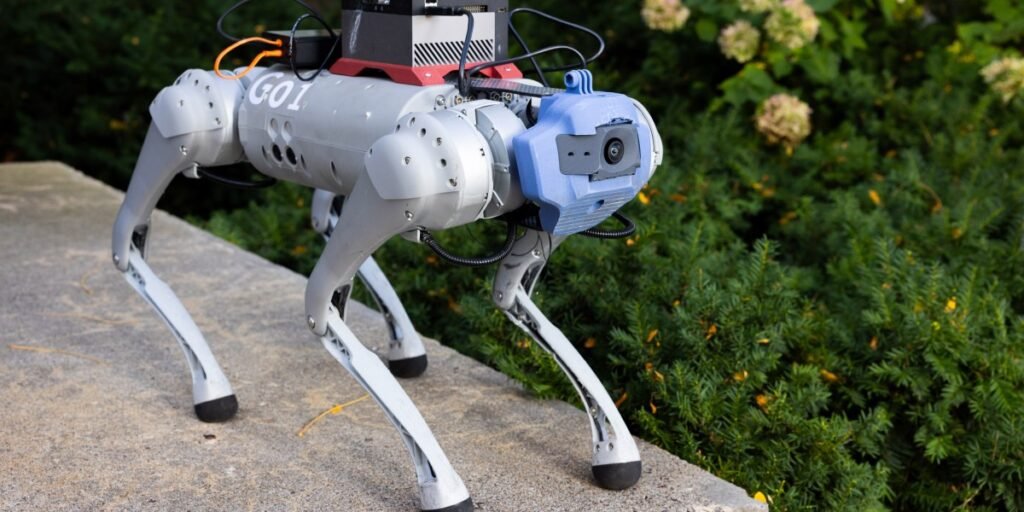Researchers used the system, known as LucidSim, to coach a robotic canine in parkour, getting it to scramble over a field and climb stairs although it had by no means seen any real-world information. The strategy demonstrates how useful generative AI might be relating to educating robots to do difficult duties. It additionally raises the chance that we may in the end practice them in fully digital worlds. The research was offered on the Convention on Robotic Studying (CoRL) final week.
“We’re in the midst of an industrial revolution for robotics,” says Ge Yang, a postdoc at MIT’s Laptop Science and Synthetic Intelligence Laboratory, who labored on the challenge. “That is our try at understanding the influence of those [generative AI] fashions outdoors of their authentic meant functions, with the hope that it’ll lead us to the following era of instruments and fashions.”
LucidSim makes use of a mixture of generative AI fashions to create the visible coaching information. First the researchers generated hundreds of prompts for ChatGPT, getting it to create descriptions of a spread of environments that characterize the situations the robotic would encounter in the true world, together with various kinds of climate, occasions of day, and lighting situations. These included “an historic alley lined with tea homes and small, quaint outlets, every displaying conventional ornaments and calligraphy” and “the solar illuminates a considerably unkempt garden dotted with dry patches.”
These descriptions had been fed right into a system that maps 3D geometry and physics information onto AI-generated photographs, creating brief movies mapping a trajectory for the robotic to observe. The robotic attracts on this data to work out the peak, width, and depth of the issues it has to navigate—a field or a set of stairs, for instance.
The researchers examined LucidSim by instructing a four-legged robotic geared up with a webcam to finish a number of duties, together with finding a visitors cone or soccer ball, climbing over a field, and strolling up and down stairs. The robotic carried out constantly higher than when it ran a system skilled on conventional simulations. In 20 trials to find the cone, LucidSim had a 100% success charge, versus 70% for programs skilled on normal simulations. Equally, LucidSim reached the soccer ball in one other 20 trials 85% of the time, and simply 35% for the opposite system.
Lastly, when the robotic was working LucidSim, it efficiently accomplished all 10 stair-climbing trials, in contrast with simply 50% for the opposite system.
COURTESY OF MIT CSAIL
These outcomes are doubtless to enhance even additional sooner or later if LucidSim attracts immediately from subtle generative video fashions somewhat than a rigged-together mixture of language, picture, and physics fashions, says Phillip Isola, an affiliate professor at MIT who labored on the analysis.
The researchers’ strategy to utilizing generative AI is a novel one that can pave the best way for extra fascinating new analysis, says Mahi Shafiullah, a PhD scholar at New York College who’s utilizing AI models to train robots. He didn’t work on the challenge.

